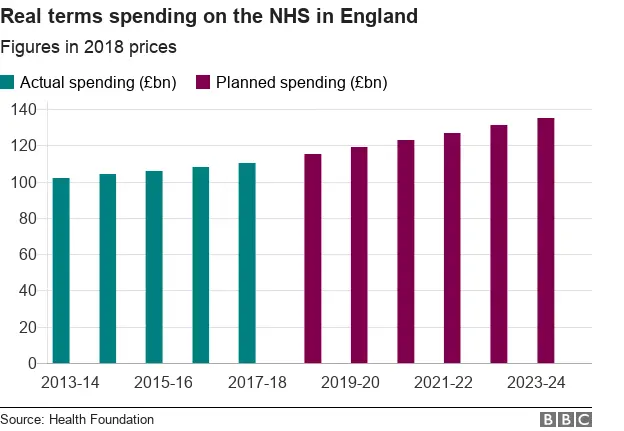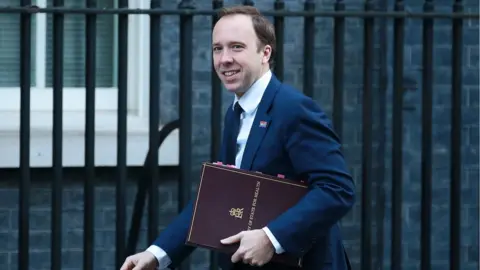The challenges facing the NHS in 2019
 Getty Images
Getty ImagesWhen the NHS is preoccupied with immediate pressures, like the surge in numbers of sick patients that winter brings, it's hard to imagine how there can be time for senior managers to think beyond the next month, never mind five years or more. But they are having to.
The long-term plan for the NHS in England - due out by the end of 2018 but delayed because of the government's preoccupation with Brexit - should now be published in January.
And it could set the tone for the NHS in England for the next decade.
The period of waiting and wondering has been frustrating for staff and managers alike, not to mention health charities and campaign groups which have been jockeying for a prime position in the plan.
The postponement of a consultation document, or Green Paper, on social care in England has fuelled further criticism in some quarters about the government's priorities.
The genesis of the plan was the prime minister's announcement in June 2018 of a new funding package for the NHS in England with an extra £20.5bn annually by 2023.

This amounted to a real-terms increase of 3.4% a year - rather more than the annual funding growth in recent years. In return, Theresa May called on NHS leaders to set out how they would spend the money and where efficiency savings could be made, hence the need for a long-term plan.
Expectations were high and health lobbyists sent in lengthy shopping lists. NHS England's chief executive Simon Stevens and his management team honed their priorities. They were told by ministers to have it ready to roll in early December.
Then came summits, a confidence vote and wrangling over Brexit backstops, and the NHS plan was put back in the pending tray.
The plan was not fully signed off before Christmas. Stories emerged of last-minute tension between NHS England and other parts of Whitehall.
NHS leaders know that funding increases of 3.4% per year, while higher than in the past few years, are more or less in line with the long-run average in recent decades.
They suspect that higher patient demand will account for a chunk of the money each year, leaving a limited amount for new initiatives.
Emergency admissions to hospitals were up 6% in the year to November 2018.
But ministers want some new projects to showcase and it's understood the plan contains fresh commitments on cancer care and the treatment of heart disease.
For their part, NHS leaders will be keen to highlight local schemes where the health service is working closely with social care providers, known as integrated care. There will be a pledge to extend the model across England.
 Getty Images
Getty ImagesThe plan is seen as a potentially big moment for GP and community care with a commitment to out-of-hospital services though a lot will depend on the precise funding allocation.
The Treasury and Downing Street are understood to want a detailed plan on what milestones will be hit each year in return for the funding increases.
NHS leaders are reluctant to be tied down to such firm pledges with future patient demand so hard to predict.
Whitehall sources deny there have been any disagreements. Rather, they say, there has been a desire by Downing Street to get to grips with the detail having been focused on other matters for most of November and December.
 Getty Images
Getty ImagesThe Welsh government has already published a long-term plan for health and social care. This includes promises of a "person-centred approach" with more services closer to people's homes and outside of hospitals. Like the planned Green Paper in England, there will be discussions about how to pay for social care including increasing taxes.
The Scottish government says it wants to increase the pace with which the health and social care systems are integrated in 2019, following the creation in 2016 of joint boards responsible for funding local services. There will be investment in a drive to reduce NHS waiting times.
With the assembly and executive suspended in Northern Ireland it is hard to identify priorities and long-term strategic plans. The NHS plods on with civil servants doing the best they can in the absence of political leadership. Waiting times for routine surgery and in A&E continue to exceed those in the rest of the UK.
There are some big decisions to be made in 2019 about how the NHS and social care cope with the care needs of more older and sicker patients.
More care away from hospitals is what everyone wants, but finding the money to keep up with patients' needs gets harder, leaving political and health leaders at Westminster and the devolved administrations with a lot to think about in the year ahead.
